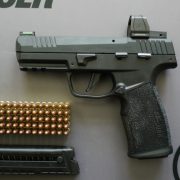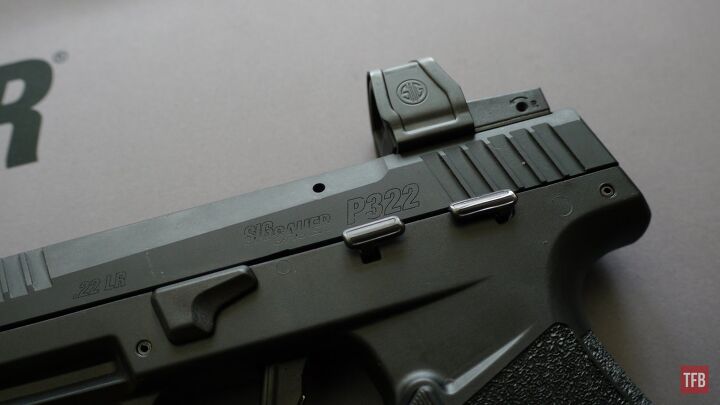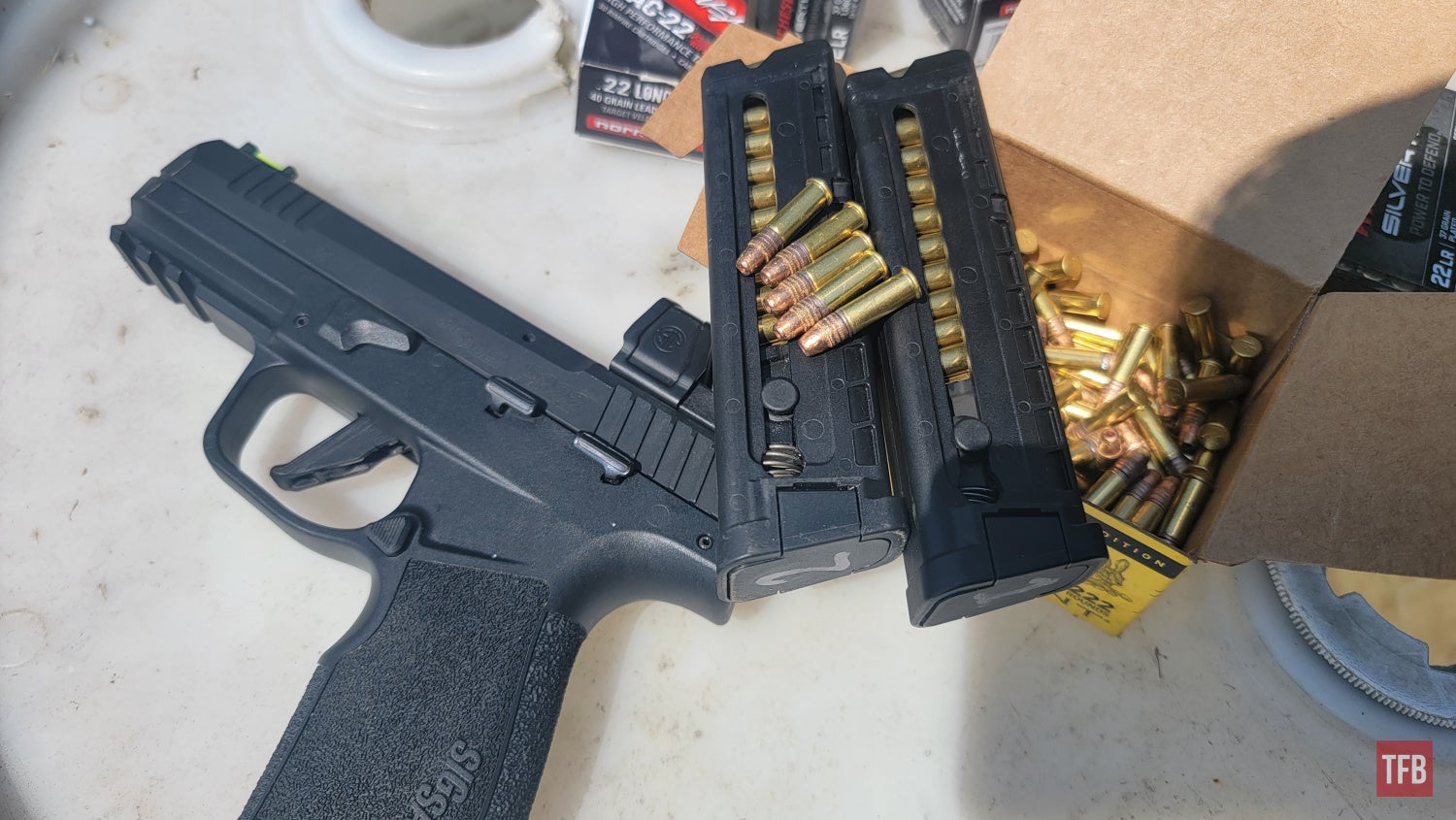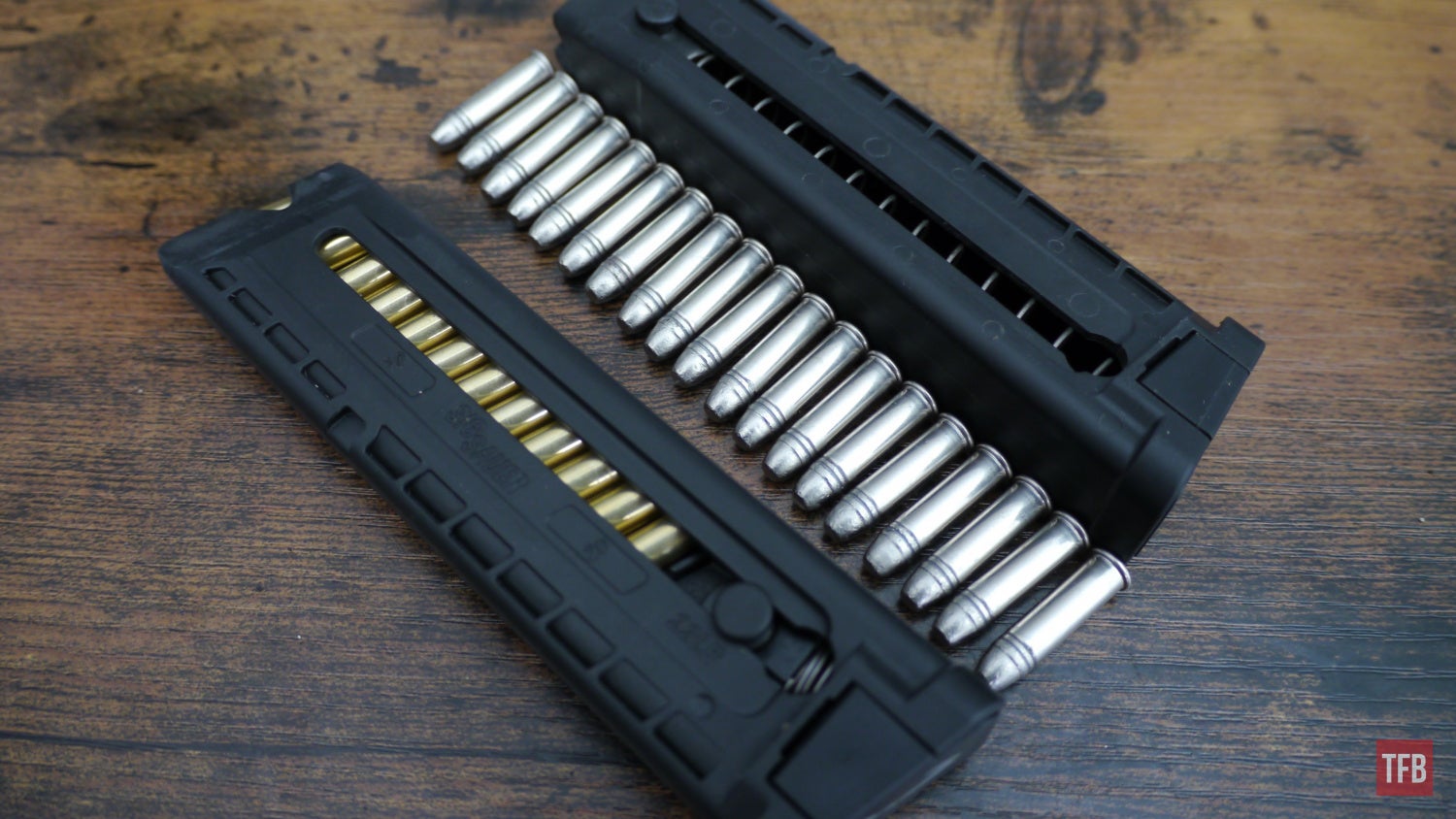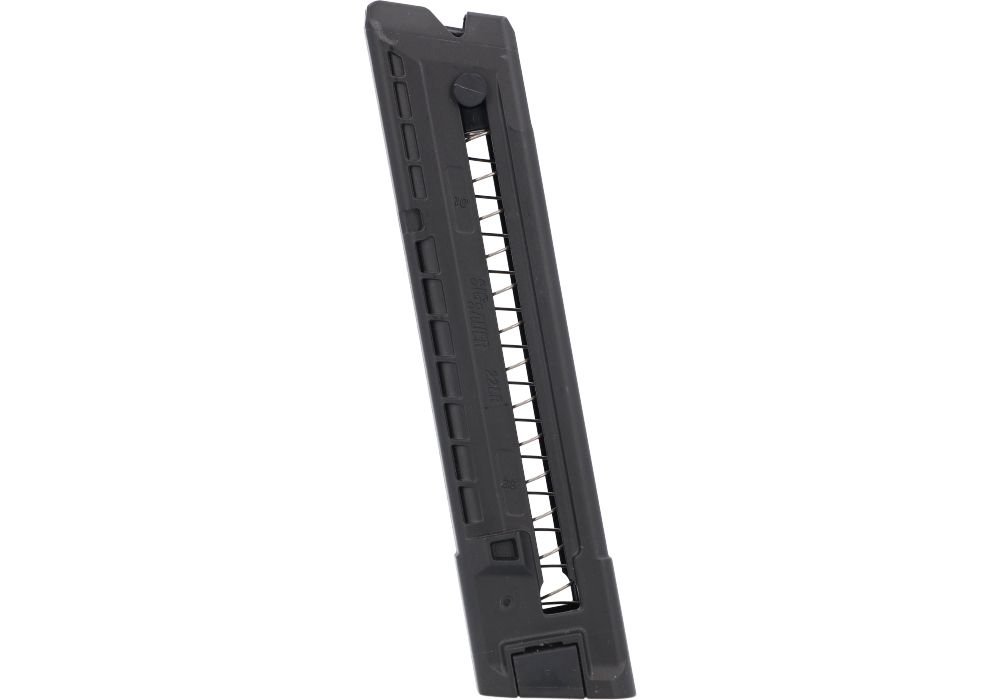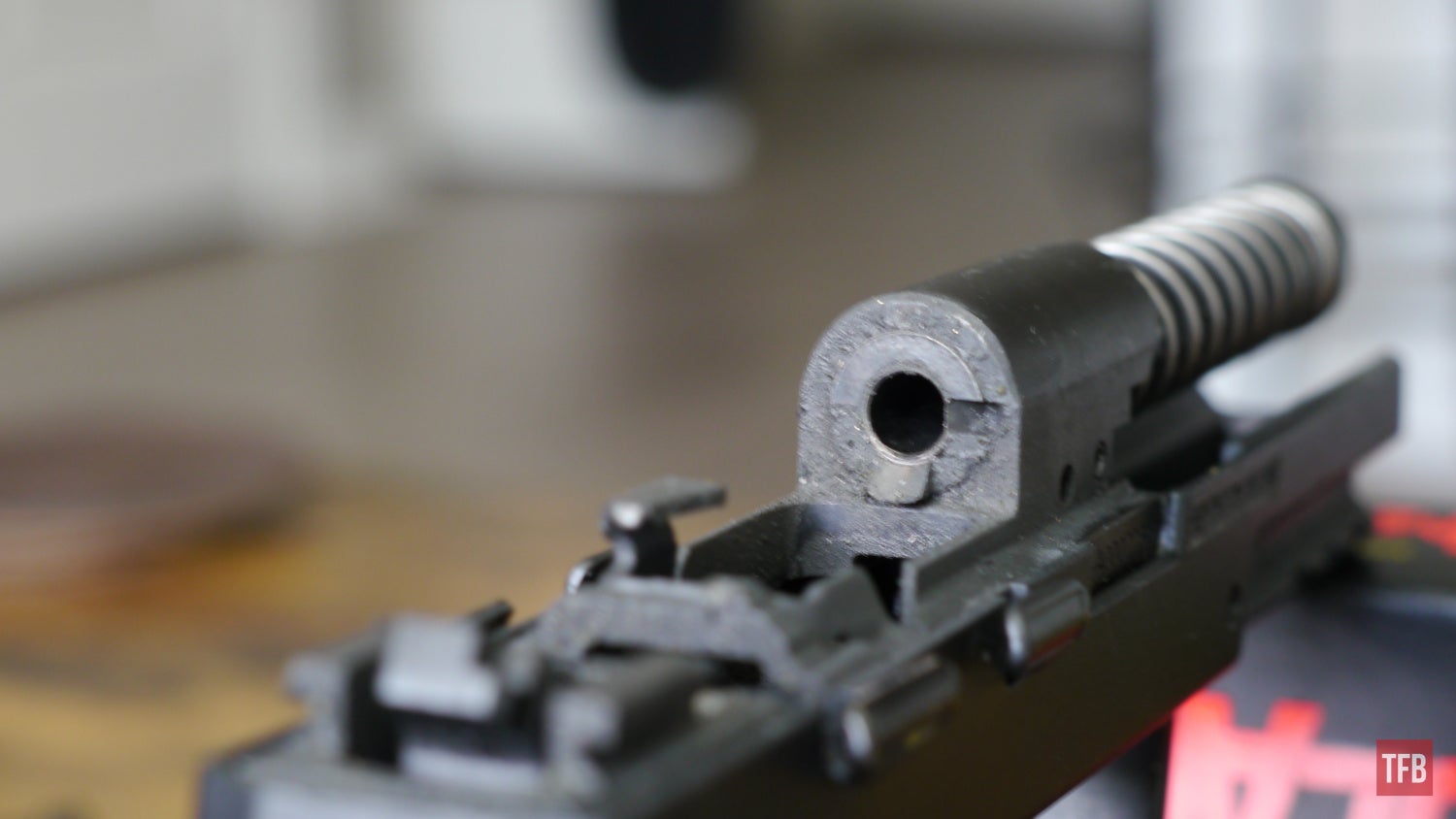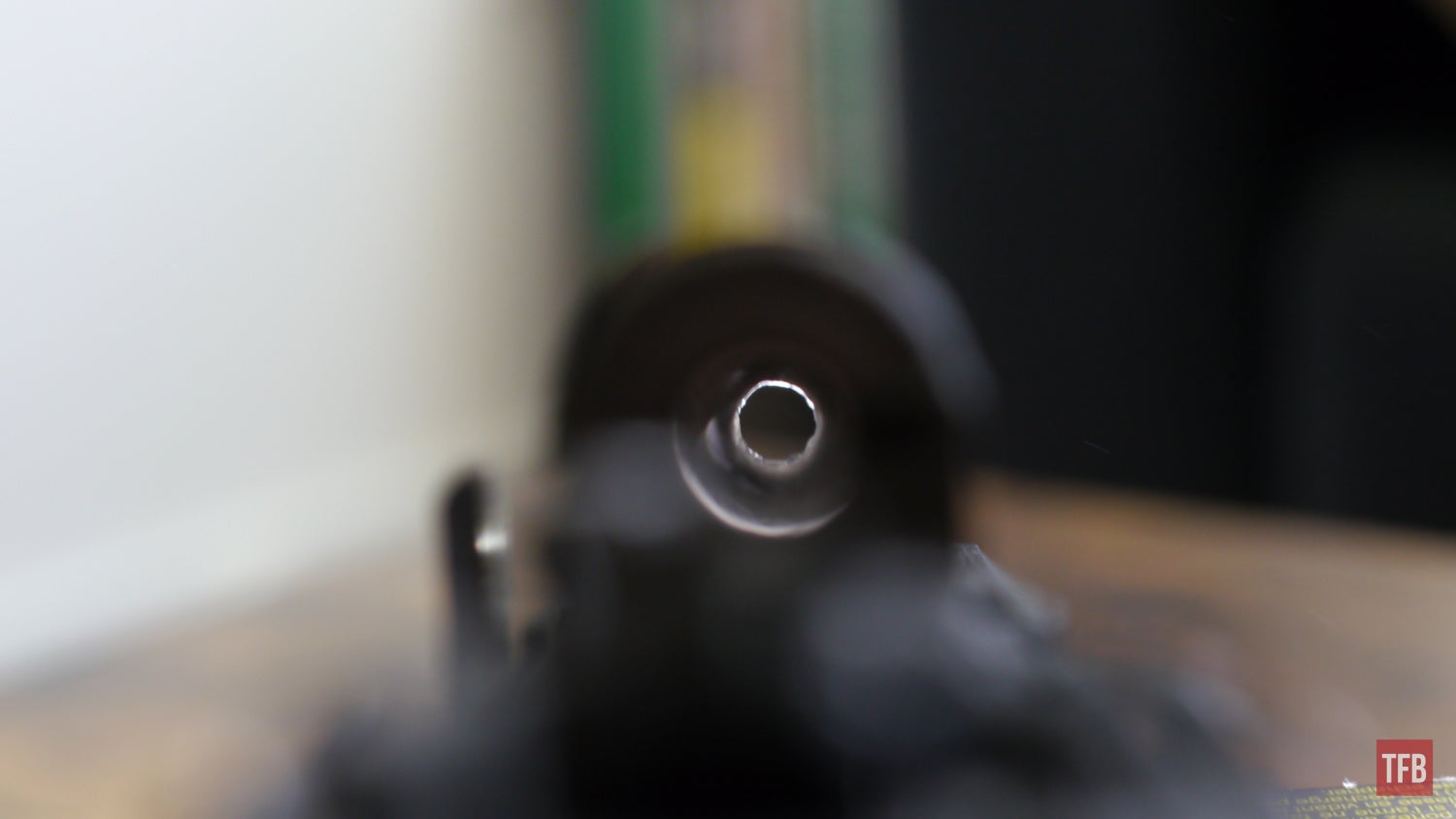Hello and welcome back to another edition of The Rimfire Report! This ongoing series is about the rimfire firearm world and its various firearms, ammunition, shooting sports, and history. Back in April of this year, we took our first look at the new SIG Sauer P322 rimfire pistol. Overall, the pistol is a well-built, accurate, reliable pistol which is fun to shoot for new and seasoned shooters alike. The SIG P322 thus far has proved to be very reliable, and able to handle just about everything we’ve thrown at it. As promised at the end of my 6,000-round durability test, we’re stopping in again in this edition of The Rimfire Report to see how the SIG P322 is holding up 10000 rounds later.
Previous Rimfire Report Articles @ TFB:
- The Rimfire Report: Walther WMP 22WMR Pistol Review
- The Rimfire Report: Rimfire Reliability – Is it Really That Bad?
- The Rimfire Report: Is 22 Magnum A Viable Concealed Carry Cartridge?
The Rimfire Report: The SIG P322 – 10,000 Rounds Later
To clear the room real quick of anyone out there just to see the demise of the P322 for having the audacity to be a popular new product, no, the pistol is not broken and it is still functioning more or less the same as it did the day I brought it home from my FFL. However, there are lots of observations to be made about the P322 10,000 rounds later. The first subject we’ll take a look at is further ammunition testing.
Ammunition compatibility/reliability
I was able to get my hands on a couple of new varieties of rimfire ammunition including Norma TAC-22, Herters 40-grain, and Winchester Silver Tips. While a vast majority of this set of 4,000 rounds were mostly bulk back Winchester 40-grain hollowpoints and CCI 40-grain Mini mags, the last 1,500 rounds or so consisted mainly of those three new types of ammunition.
The first of the new ammunition I tried was the Norma TAC-22 40-grain high-velocity ammunition. Norma TAC-22 is highly recommended by many and to be quite honest I never really had all that much experience with it up until now. I had initially wanted to do a majority of the long-term durability testing with one type of ammunition, CCI Standard Velocity, but supply chain issues made me resort to buying what I could get my hands on. Norma TAC-22 works flawlessly in the P322. The other two options, however, are a different story.
Winchester Silvertips are marketed as being optimized for handguns but I found that out of the 200-rounds I fired, I would have a failure to feed about once or twice every other magazine. I had mentioned previously that P322 seemed to have issues with both truncated cone and hollow point ammunition and since the Silvertips combine both of these features, they tended to get hung up while feeding into the chamber and deforming the bullet so much that they couldn’t be reinserted. I would not recommend using this type of ammunition in your P322.
On the other hand, the Herters 40-grain high-velocity ammunition did work for the most part but tended to get caught up in the magazines of the P322. I can’t completely blame this one of the gun’s magazines as there seemed to be an abnormally large buildup of wax on the nose of the bullets which I think caused many of the rounds to get stuck enough within the magazine so that the slide would outrun the feeding of the next round.
This could be an isolated incident with my particular lot of ammunition. Overall, not a bad choice for plinking but definitely not a great choice if you’re planning on competing. All of the “normal” ammunition I run through the pistol still works great and aside from two dud rounds (both Winchester Super-X), I’ve experienced no malfunctions of any kind with those brands of ammunition (mostly CCI Standard and Mini-Mags).
Magazine Capacity – It’s Not a Bug, It’s A feature
One of the major defining features of the P322 is its 20-round standard capacity magazines. Each P322 comes with two of them giving you instant access to 40-rounds of fun before needing to go back and stuff magazines again. However, what if I told you that the magazines now hold 24-rounds each? About 8,000 rounds into my long-term durability testing I started to notice that the magazines became much easier to load. Out of curiosity, I tried stuffing more than 20-rounds in there, and not only could I fit one or two more, but four more rounds.
Since I discovered this, I have only opted to load the magazines to 24-rounds and I even attempted to stuff the 25th round in there only to discover that it will just barely not fit. I don’t know if anyone else who has a P322 has been able to fit more than 20-rounds in their magazines but I did find that both my #1 and #2 mags (labeled to keep track of possible malfunctions related to magazine use/damage) were able to load up to 24 rounds.
SIG Sauer soft-launched their 25-round magazines for the P322 and I have yet to pick any of them up for testing but I have to wonder if the 20-round magazines can work their way up to 24-rounds, can the 25-rounders hold even more? I’ll be sure to pick some of the extended magazines up to see how far that gets us and whether or not SIG is giving future 22LR pistol manufacturers even less of a reason to cap their capacities at a measly 10-rounds.
General Wear and Tear
The P322 gets taken to the range almost anytime I go out there. Whether I’m going to shoot rifles, PCCs, or centerfire pistols, the P322 tags along to at least run a couple of sleeves through it. I still have yet to clean the pistol, even at 10,000 rounds but I think we are starting to see a bit of wear and tear taking place on the plucky little handgun that can’t be ignored.
Slide
A quick field strip of the pistol has revealed some wear-through of the slide’s finish – exposing the aluminum underneath. As you can see in the pictures below the wear is pretty minor and in the future, I’ll be keeping a close eye on all of these wear points to see if they get any worse. The exterior of the slide has held up pretty well against minor bumps with a few small areas stripped of their finish, mostly around the ejection port and the muzzle-end of the slide where it has been bumped occasionally when shooting through V-TAC barricades.
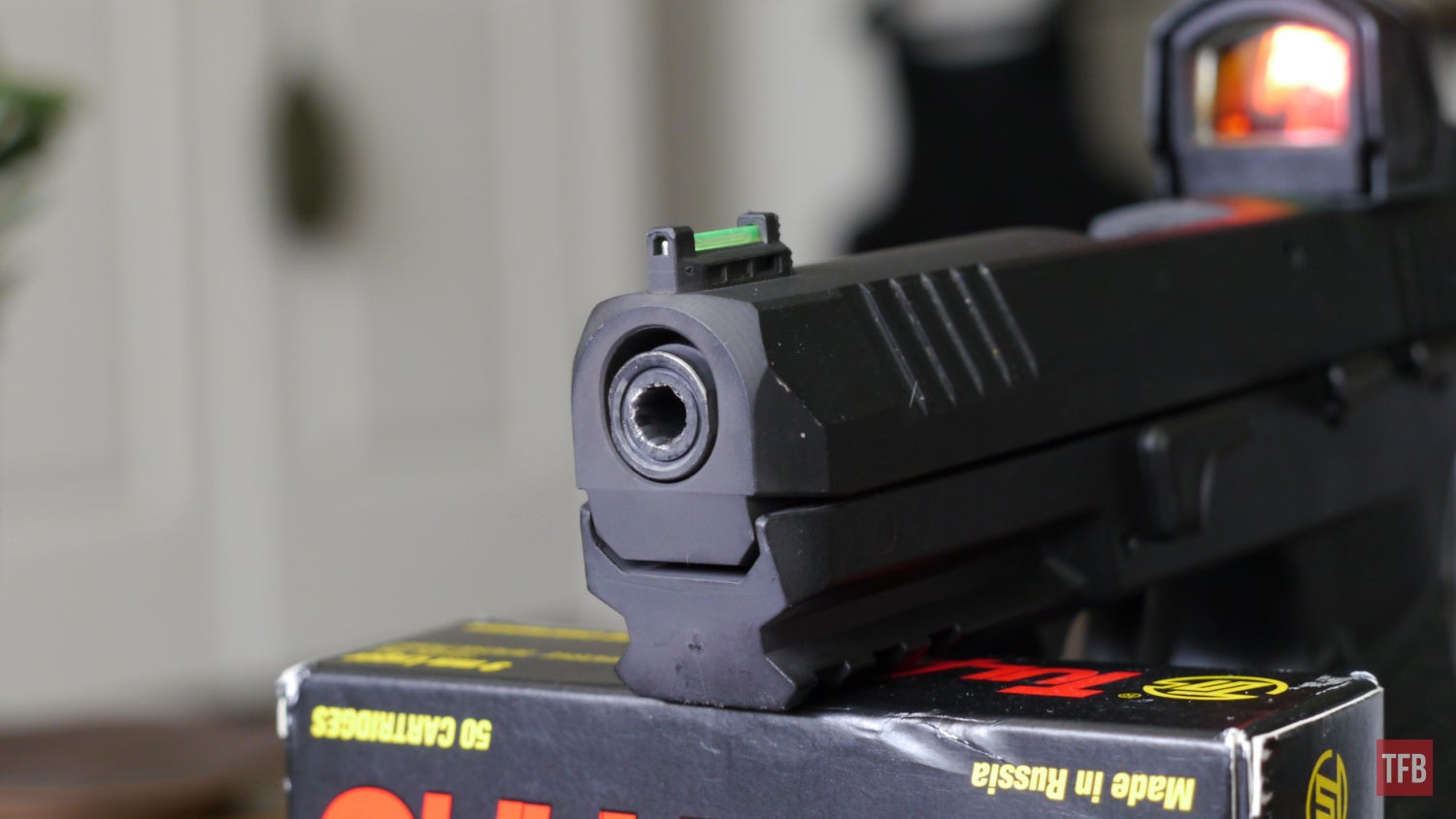
Lots of lead build-up on the muzzle of the P322
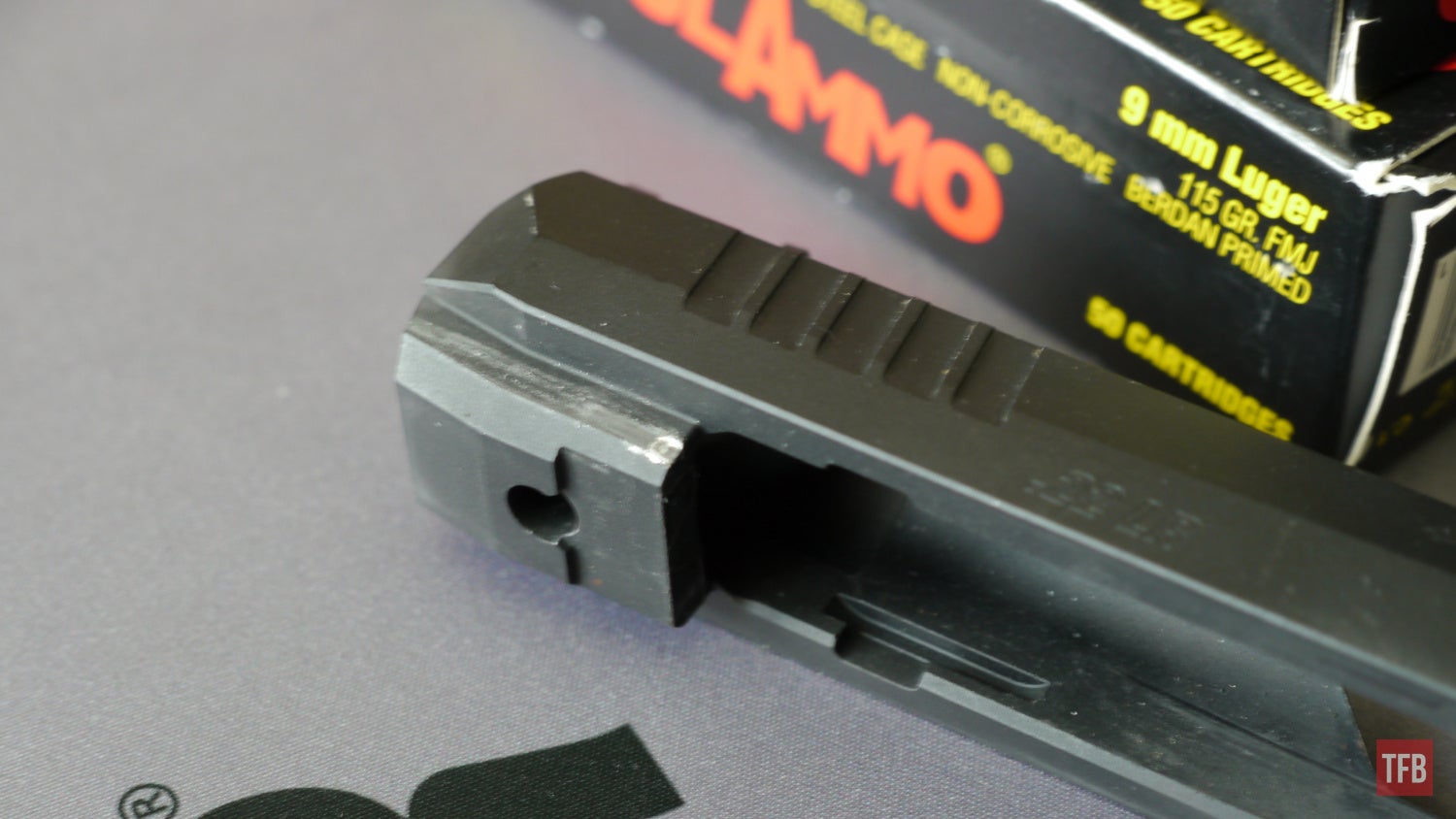
The interior of the slide is starting to show some clear signs of wear
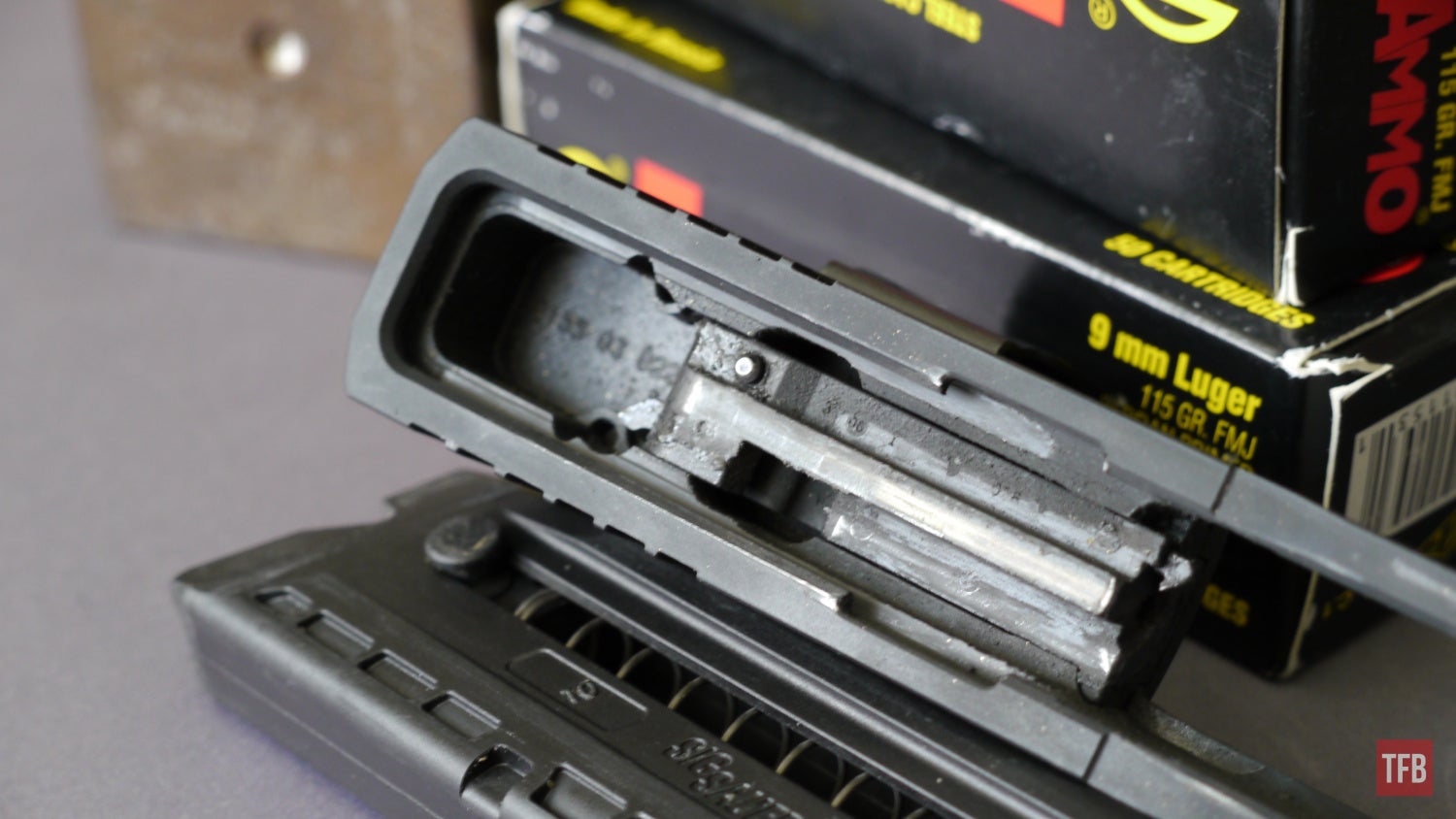
More wear is seen near the left-hand side of the slide.
On a related note, at about 7,000 rounds in, the Crimson Trace that had been mounted to the slide worked its way loose just in time for me to swap in the new SIG Sauer ROMEOZero-ELITE micro reflex sight. If you’re going to run a micro reflex sight on the SIG P322, I think the RomeoZero is a solid fit as it naturally squares the optic to the slide because of its mounting hardware. The shroud might be a bit overkill for what the SIG P322 is designed for but the added weight didn’t affect cycling performance at all.
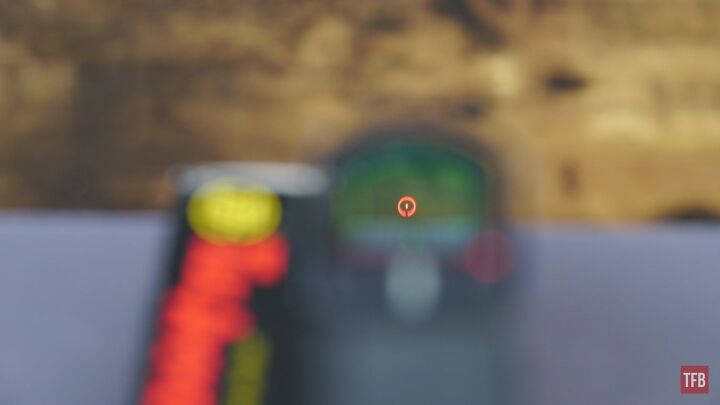
Review coming soon on the SIG ROMEOZero-ELITE Micro Reflex Sight
The fiber-optic front sight is still secure on the front of the slide and despite the gun becoming hot to the touch during some of my longer testing days, the sight assembly hasn’t shown any signs of melting or working itself loose.
Barrel/Frame
A quick look at the barrel and you’ll notice that it is in sore need of a cleaning. There is a significant amount of lead buildup near the muzzle end and that leading extends about 2-inches towards the breech end. I am opting to clean out the barrel as I did with the first 6,000 rounds simply to clear out the lead buildup. When the SIG P322 isn’t at the range, it’s on my desk at home and is dry-fired constantly.
I can’t accurately count how many times I’ve dry fired the pistol at this point but it is very likely in excess of the number of rounds I’ve actually fired through the gun. To that end, I am still getting very solid primer strikes and no noticeable peening of the firing pin or deformation of the breech face. Suffice it to say I think the gun is more than safe to dry fire. The frame, aside from collecting a lot of carbon and skin buildup, is in perfect condition.
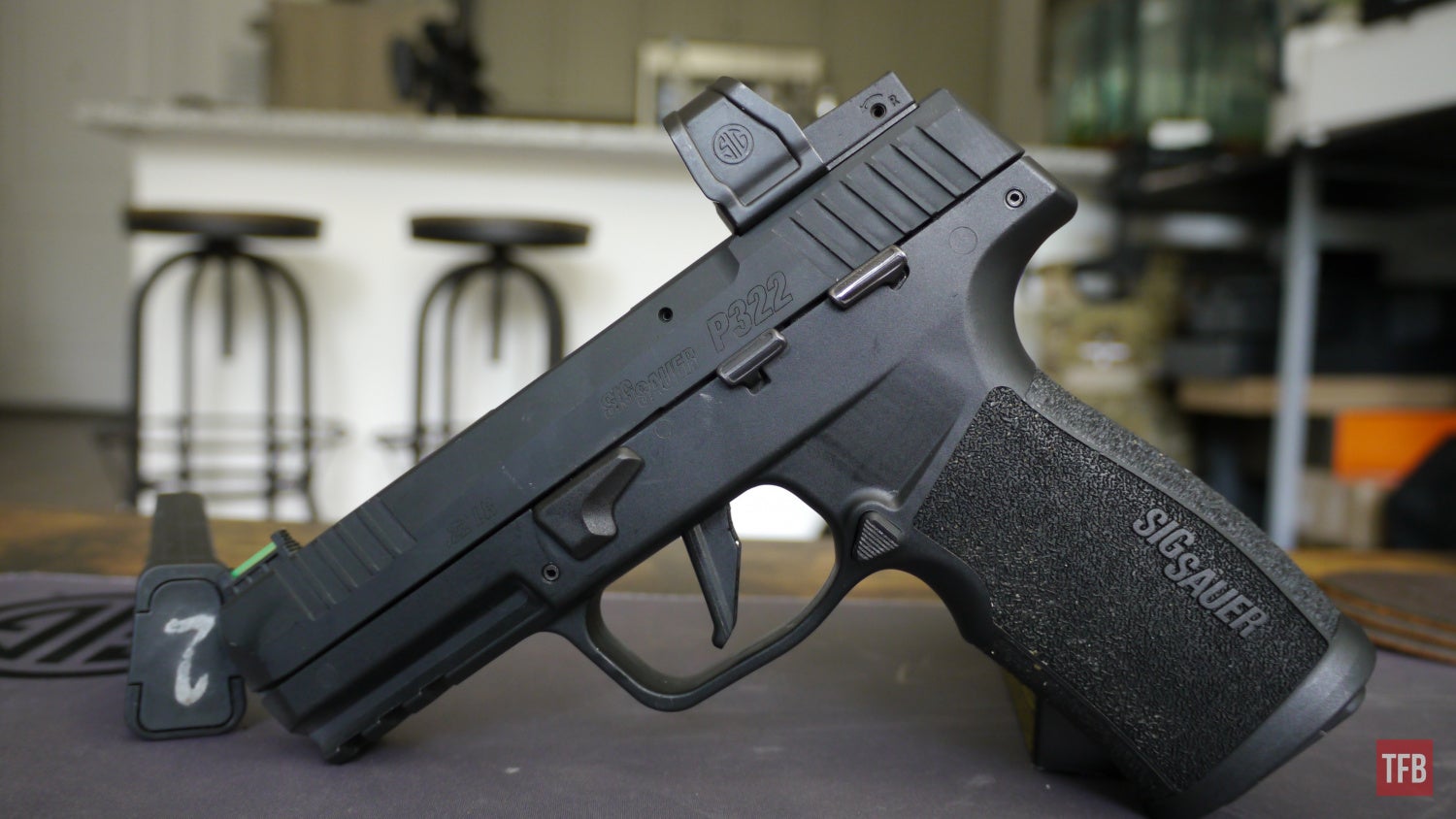
The Rimfire Report: The SIG P322 – 10,000 Rounds Later
The P322’s trigger is still breaking at around the same 2 lbs 12 ounces that it was during my first set of initial durability testing so I don’t think there is anything to worry about as far as the internals of the pistol go. While everything is caked in debris, nothing I am observing about how the pistol functions are causing me to be concerned that it is about to break or stop functioning suddenly.
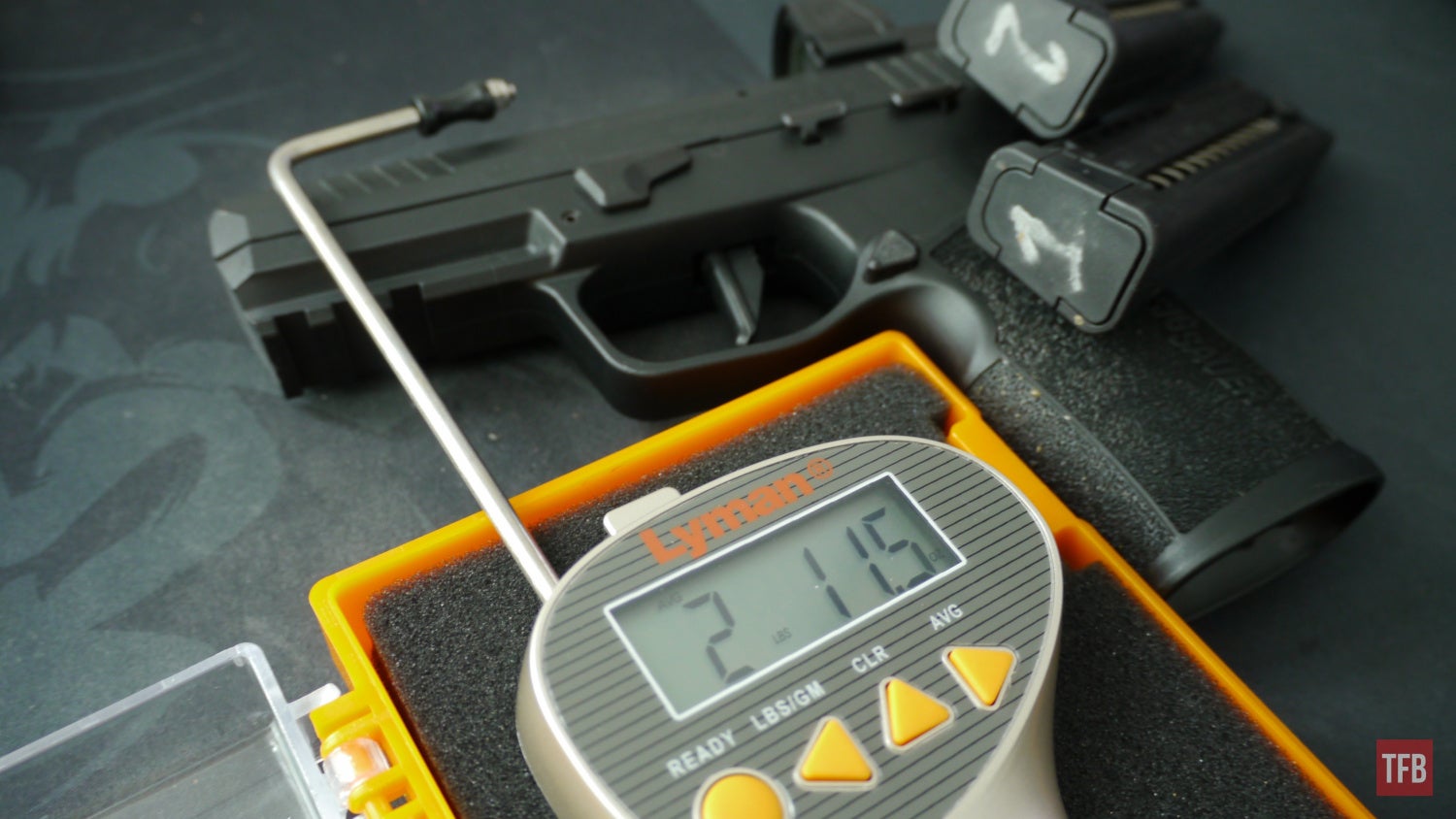
The Rimfire Report: The SIG P322 – 10,000 Rounds Later
Conclusions 20,000-round Roadmap
Overall, I would say that the SIG P322 is holding up quite well to my constant regimen of abuse and neglect. The goal going forward is to just keep shooting it until it ceases functioning. The P322 is largely a maintenance-free handgun which I think is a good thing for newer shooters. In comparison, my Ruger MKIV has to be cleaned about every 1,500 rounds or so otherwise I’ll start running into function issues. 10,000 rounds later and the P322 is giving me hope that it will make it to 20,000 rounds with no problem, however, I would recommend that you run a bore snake through the pistol every couple thousand rounds or so as I will be doing before my next range session with the gun.
For now, I think I can conclude that the P322 is shaping up to be one of the best rimfire pistol offerings the world has seen. If the minor wear issues on the interior of the slide don’t progress any further, I think I may actually be able to wear the barrel out before the pistol gives up the ghost. However, that is going to require much more ammunition (CCI if you’re reading this I wouldn’t say no to a generous 10,000-round donation of ammo for testing purposes).
One final parting thought for you to put 10,000 rounds to scale. The P322 is sold for an average price of $400 by most SIG retailers. With the average price of .22LR bulk ammo dropping to about $0.08 per round, I’ve put about $800 worth of ammunition through the pistol which is twice the value of the gun itself. All in all, I think I’m going to get a lot more entertainment value out of the P322 than I was initially expecting, here’s to 10,000 more rounds!
Thanks as always for stopping by to read The Rimifre Report. Let me know what you guys think of the performance of the P322 so far. Do you have other rimfire pistols that are just as reliable, or better in some respects? Should we be concerned about the slide wear or barrel leading? Let me know your thoughts down in the comments!
We are committed to finding, researching, and recommending the best products. We earn commissions from purchases you make using the retail links in our product reviews. Learn more about how this works.


